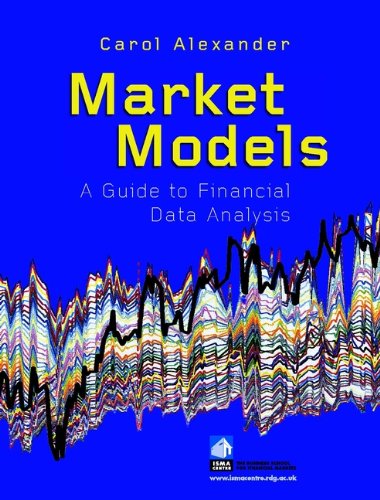
Market Models: A Guide to Financial Data Analysis (PDF/EPUB Version)
$18.99
In each of the 13 Chapters, Market Models presents real world illustrations to motivate theoretical developments. The accompanying CD contains spreadsheets with data and programs; this enables you to implement and adapt many of the examples. The pricing of options using normal mixture density functions to model returns; the use of Monte Carlo simulation to calculate the VaR of an options portfolio; modifying the covariance VaR to allow for fat-tailed P&L distributions; the calculation of implied, EWMA and ‘historic’ volatilities; GARCH volatility term structure forecasting; principal components analysis; and many more are all included.
Carol Alexander brings many new insights to the pricing and hedging of options with her understanding of volatility and correlation, and the uncertainty which surrounds these key determinants of option portfolio risk. Modelling the market risk of portfolios is covered where the main focus is on a linear algebraic approach; the covariance matrix and principal component analysis are developed as key tools for the analysis of financial systems. The traditional time series econometric approach is also explained with coverage ranging from the application cointegration to long-short equity hedge funds, to high-frequency data prediction using neural networks and nearest neighbour algorithms.
Throughout this text the emphasis is on understanding concepts and implementing solutions. It has been designed to be accessible to a very wide audience: the coverage is comprehensive and complete and the technical appendix makes the book largely self-contained.
Market Models: A Guide to Financial Data Analysis is the ideal reference for all those involved in market risk measurement, quantitative trading and investment analysis.



_spnfrqerw0.jpg)





_hbpbqeiots.jpg)
_idmgqlrt91.jpg)




_czggxxd6hy.jpg)
_ay0l9q7pd9.jpg)
_how_to_design_and_deliver_successful_business_presentations_anif5kxtbo.jpg)
_how_to_design_and_deliver_successful_business_presentations_lvclkx62zf.jpg)
_(certification_press)_pfpwp1gw32.jpg)
_(certification_press)_p7lctr3fbt.jpg)